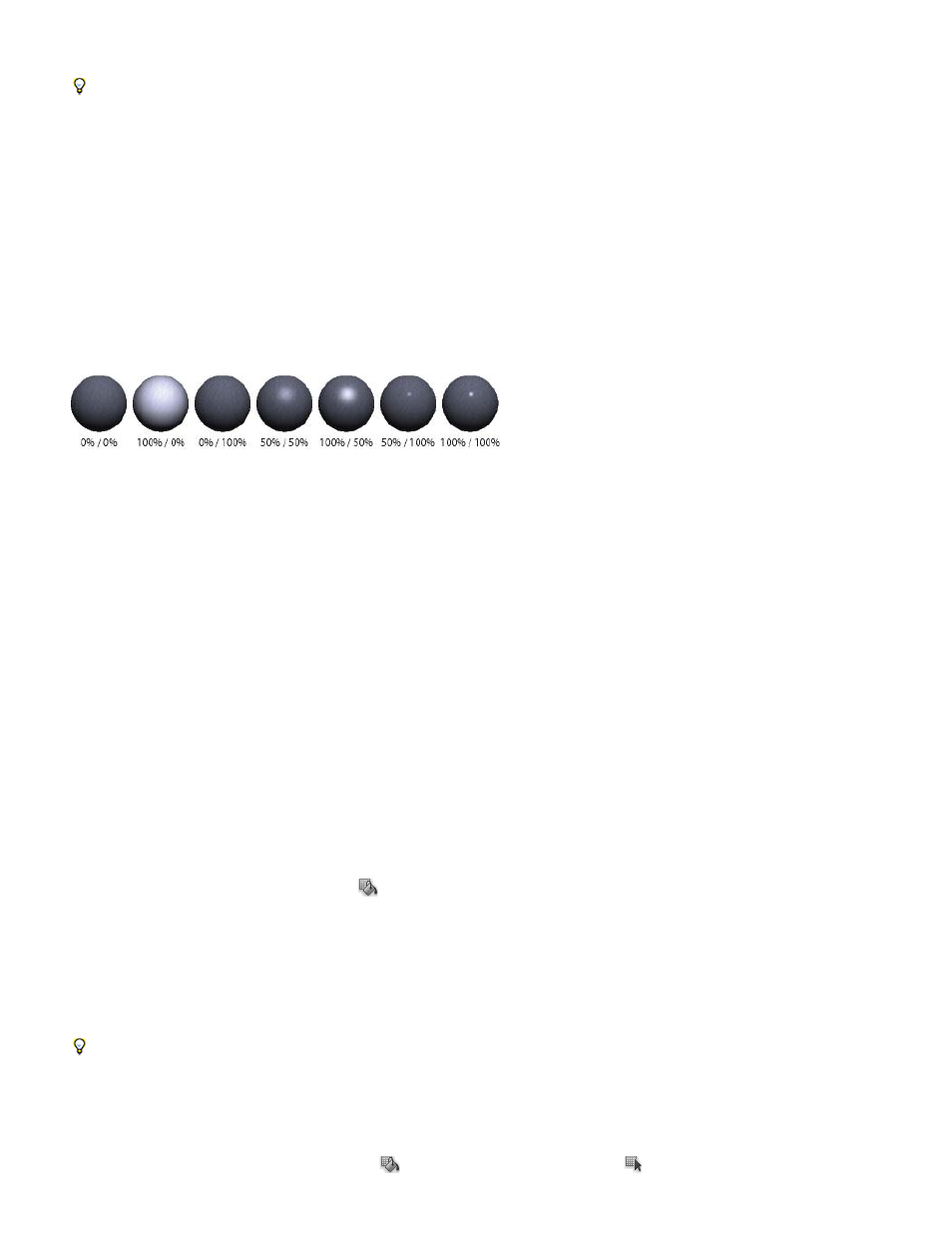Adobe Photoshop CC 2014 v.14.xx User Manual
Page 1030

Environment
Reflection
Illumination
Gloss
Shine
Note:
Specular
Ambient
Refraction
Stores the image of the environment surrounding the 3D model. Environment maps are applied as spherical panoramas. The
contents of the environment map can be seen in the reflective areas of the model.
To prevent an environment map from reflecting on a given material, change Reflectivity to 0%, add a reflectivity map that masks the material
area, or remove the environment map for that material.
Increases the reflection of other objects in the 3D scene, and the environment map, on the material surface.
Defines a color that doesn't rely on lighting to display. Creates the effect that the 3D object is lit from within.
Defines the amount of light from a source that reflects off the surface and back to the viewer. You can adjust glossiness by entering a value
in the field or using the scrubby slider. If you create a separate glossiness map, the intensity of colors in the map controls glossiness in the
material. Black areas create full glossiness, white areas remove all glossiness, and middle values reduce the size of a highlight.
Defines the dispersion of the reflected light generated by the Gloss setting. Low shininess (high dispersion) produces more apparent light,
with less focus. High shininess (low dispersion) produces less apparent light and brighter, crisper highlights.
Adjusting Gloss (left number) and Shine (right number)
If a 3D object has more than the nine texture types Photoshop supports, additional textures appear in the Layers panel and the 3D Paint
Mode list. (To display the latter, choose 3D > 3D Paint Mode, or use the Paint On menu in the Scene section of the 3D panel
The color displayed for specular properties (for example, highlight glossiness and shininess).
Sets the color for ambient light visible on reflective surfaces. This color interacts with the Global Ambient Color for the entire scene. See
Sets the refractive index when scene Quality is set to Ray Traced and the Refractions option is selected in the 3D > Render Settings
dialog box. Refraction is the change in light direction that occurs at the intersection of two media (such as air and water) with different refractive
indexes. The default value for new materials is 1.0 (the approximate value for air).
Sample and apply materials directly on objects
The 3D Material Drop tool works much like the traditional Paint Bucket tool, letting you sample and apply materials directly on 3D objects.
1. In 3D panel, select the 3D Material Drop tool
.
2. Move the pointer over the 3D object in the document window. When the material you want to sample is outlined, Alt-click (Windows) or
Option-click (Mac OS).
3. Move the pointer to outline the material you want to change, and click.
For a visual example of an outlined material, see
Outline the selected material or mesh in the document window
Select materials directly on objects
1. In 3D panel, hold down the 3D Material Drop tool
, and select the 3D Select Material tool
.
1023
